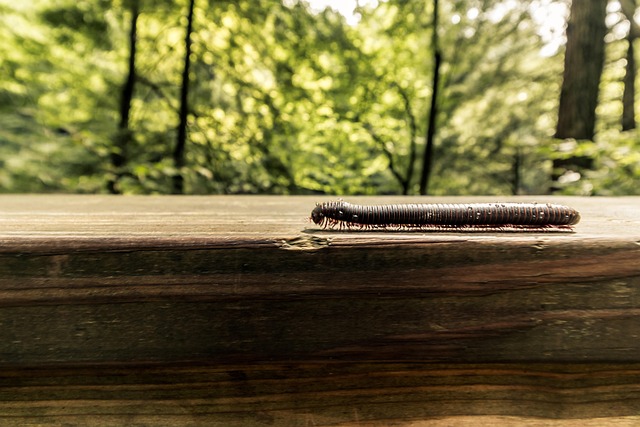Millipedes thrive in dark, damp spaces like basements, bathrooms, and kitchens, forming clusters and seeking shelter in cracks. Effective millipede infestation treatment involves a combination of targeted strategies, including chemical and natural solutions, focusing on safety for children and pets. Key steps include regular cleaning, sealing entry points, using natural repellents like essential oils, and maintaining a clean environment to deter them. Pet-friendly solutions and professional eco-friendly pest control services are also recommended. Regular inspections and maintenance are crucial for long-term prevention.
“Millipedes, though fascinating creatures, can become a nuisance when they invade homes, especially those with children or pets. This comprehensive guide explores child- and pet-safe methods for tackling millipede infestations. We’ll delve into their behavior, providing insights to aid in prevention. From natural repellents to strategic habitat modification, we offer effective, non-toxic solutions. Learn about pet-friendly treatments, ensuring both your furry friends and family remain unharmed. Discover long-term strategies for millipede infestation treatment and reclaim your space.”
Understanding Millipede Behavior and Habitat
Millipedes are elusive creatures that prefer dark, damp places, making them common in areas like basements, bathrooms, and kitchens. Understanding their behavior is key to effective millipede infestation treatment. These insects move slowly and tend to cluster together, often seeking shelter under objects or in cracks and crevices. They are attracted to moisture, which is why they’re often found in humid environments. By identifying their preferred habitats within your home, you can take targeted measures to eliminate them.
Knowing how millipedes behave helps in determining the best approach for control. While some methods involve chemical treatments, it’s crucial to consider safer alternatives, especially when children and pets are present. Natural solutions like improving ventilation, sealing entry points, and using certain essential oils or boric acid can be effective in deterring and eliminating millipedes without resorting to harsh chemicals.
Child-Safe Methods for Millipede Control
When dealing with a millipede infestation, especially in homes with children and pets, it’s crucial to opt for safe and non-toxic methods. Traditional pest control products can be harmful if not used properly, so alternative solutions are preferable. One effective child-safe approach is maintaining a clean environment. Millipedes are attracted to moisture and organic matter, so regularly cleaning floors, especially in corners and beneath furniture, can deter them.
Another natural remedy involves using essential oils like citronella, peppermint, or lavender, which have repellent properties. Diluting these oils with water and spraying the mixture around entry points and suspected hiding places can help keep millipedes at bay. Additionally, sealing cracks and gaps in walls and floors prevents their access to homes, serving as a long-term millipede infestation treatment.
Pet-Friendly Solutions to Manage Millipedes
Managing millipede infestations while keeping pets safe is a delicate balance. Opt for pet-friendly solutions like using natural repellents such as diatomaceous earth or essential oils like peppermint and cedarwood oil, which are effective in deterring millipedes without harming your furry friends or family. These methods can be easily incorporated into your home environment and garden, creating a safe space for everyone.
For severe cases, consider hiring professional pest control services that specialize in eco-friendly practices. They offer safe alternatives to conventional pesticides, ensuring minimal risk to pets and the environment. Regular inspections and maintenance are also crucial to prevent future millipede infestations, allowing you to keep your home pet-friendly and free from these tiny creatures.
Preventive Measures and Long-Term Management Strategies
Millipede infestations can be managed safely and effectively without harmful chemicals, especially when focusing on child- and pet-friendly methods. Understanding their behavior and habitat is key to successful control. By implementing preventive measures and long-term management strategies outlined in this article, you can achieve a millipede-free environment while ensuring the safety of your family and pets. Remember, proper identification and targeted treatments are essential for effective millipede infestation treatment.
